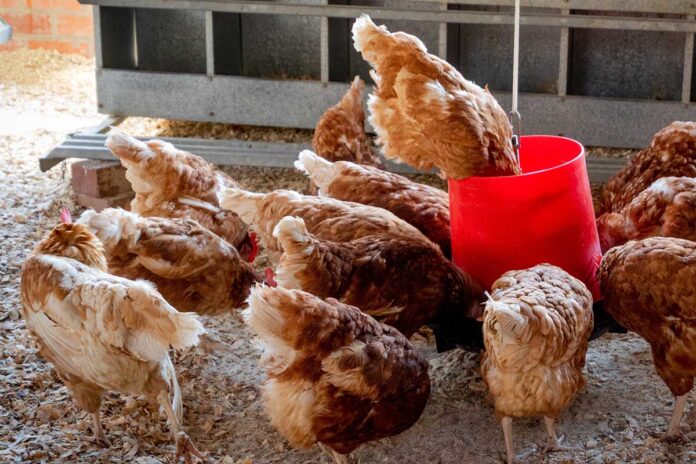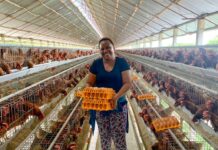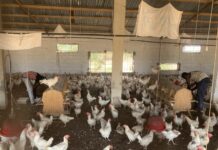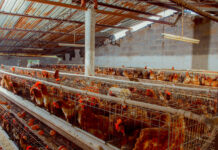
Here an insight into poultry production and consumption in India is given. The Poultry industry is one of the fastest growing segments of the agricultural sector with around eight to ten percent growth rate per annum. In earlier years broiler farms produced on average a few hundred birds (200-500 chicks) per cycle. Today units with fewer than 5,000 birds are becoming rare, and units with 10,000 to 50,000 birds per cycle are common. Similarly, in layer farms, units with a flock size of 20,000 to 50,000 birds have become common. Small units or backyard poultry are probably finding themselves at a disadvantage because of high feed and transport costs, expensive vaccines, and veterinary care services along with the non-availability of credit. However it should be noted that the structure of India’s poultry industry varies from region to region. While independent and relatively small-scale producers account for the bulk of production, integrated large-scale producers account for a growing share of output in some regions. Integrators include large regional farms that incorporate all aspects of production, including the raising of grandparent and parent flocks, rearing DOCs, contracting production, compounding feed, providing veterinary services, and wholesaling. The southern region account for about 57 percent of the country’s egg production, the eastern and central regions of India account for about 17 percent, while the northern and western regions contribute 26 percent of egg production. In addition to modern hybrid layers and broilers, India has a huge (300-500 millions) population of indigenous backyard free range chickens which is a source of pin money for housewives. The Japanese quail farming is also growing rapidly as an alternative to chicken. Native Ducks and their cross with Khaki Campbell are grown free range in north eastern state and in Kerala, mostly by nomadic tribes.
Historical background
Backyard poultry keeping dates back to the pre-historic period but the modern commercial poultry production in India is barely 50 years old. In the period 1955 to 1965 certain Christian missionaries imported White Leghorn, Rhode Island Red and White Rock breeds to upgrade the local chicken, due to their high brooding and high disease resistant characteristics. Later hybrid broiler (Arbor Acres) and layer (Babcock) strains were brought to India in early seventies to start the era of modern poultry. Amongst the two, the layer strains took wings early and showed a spectacular growth rate between 1970 to 1985. Other hybrids like Bovans, Hisex, Hyline, Keystone and Lohmann were introduced into the Indian Market for the production of white shelled eggs. Native chicken and crossbreeds developed by Agricultural and Veterinary Universities produces brown shelled eggs which constitute around 18% of the total eggs produced in India. The broiler industry came to existence around 1974 with the imports of Arbor Acres and Cobb broiler G.P stock and later on other hybrids such as Hubbard, Hybro, Marshall and Ross hybrid G.P stock were introduced. Around 18% of the broiler market in India is made up of indigenously developed cross-bred coloured broilers and local free range birds.
Native chicken breeds of India
A total of sixteen native chicken breeds have been recognized and registered as indigenous breeds of chicken in India. Among them, the most popular breeds are Aseel, Kadaknath, Nicobari etc. Some of the native chicken breeds of India are under threat of extinction due to various factors including incidence of diseases and other re-emerging diseases. Furthermore, introduction of exotic/improved chromosomes is diluting or eroding the genetic base of native chickens. So conservation of native breeds is a top priority for the Indian government if they wish to protect the livelihood of rural (backyard) poultry production.
Current scenario
The recent annual data shows that India ranks 3rd in the world in egg production and 5th in chicken meat production. The growth rate of the layer market is 6 to 7 percent per annum and broiler market is 8 to 10 percent per annum. Approximately 75 percent of egg production is produced by commercial poultry farms with the remaining percentage coming from household/backyard poultry.
Challenges
In recent times, in spite of rapid growth, the poultry industry suffered many setbacks due to rising feed costs, emergence of new or the re-emerging of existing diseases, fluctuating market price of eggs and broilers, etc. Among the matters which need to be addressed in order to make the poultry sector a sustainable enterprise are:
- The lack of basic infrastructure regarding storage and transportation, including a cold chain network.
- An inefficient marketing system.
- The price and availability of feed resources.
- Emerging and re-emerging diseases of poultry, mutations in viral genomes leading to new variants of viruses developing resistance to vaccines and antibiotics.
- Issues relating to animal welfare and environmental pollution in poultry units have been of increasing concern recently.
India is focusing on “Development” i.e. Good Food, Better Health & Living conditions for its 1.25 billion people and poultry production and consumption patterns in India foresee its further expansion and industrialization. Adoption of small scale poultry farming in backyards of rural households will enhance the nutritional and economic status of the rural people. Large commercial layer and broiler industries with the advent of knowledge, sustainability and profitability can lead to a bright future for the poultry industry.
References are available on request
From the Proceedings of the NZ Poultry Industry Conference

















